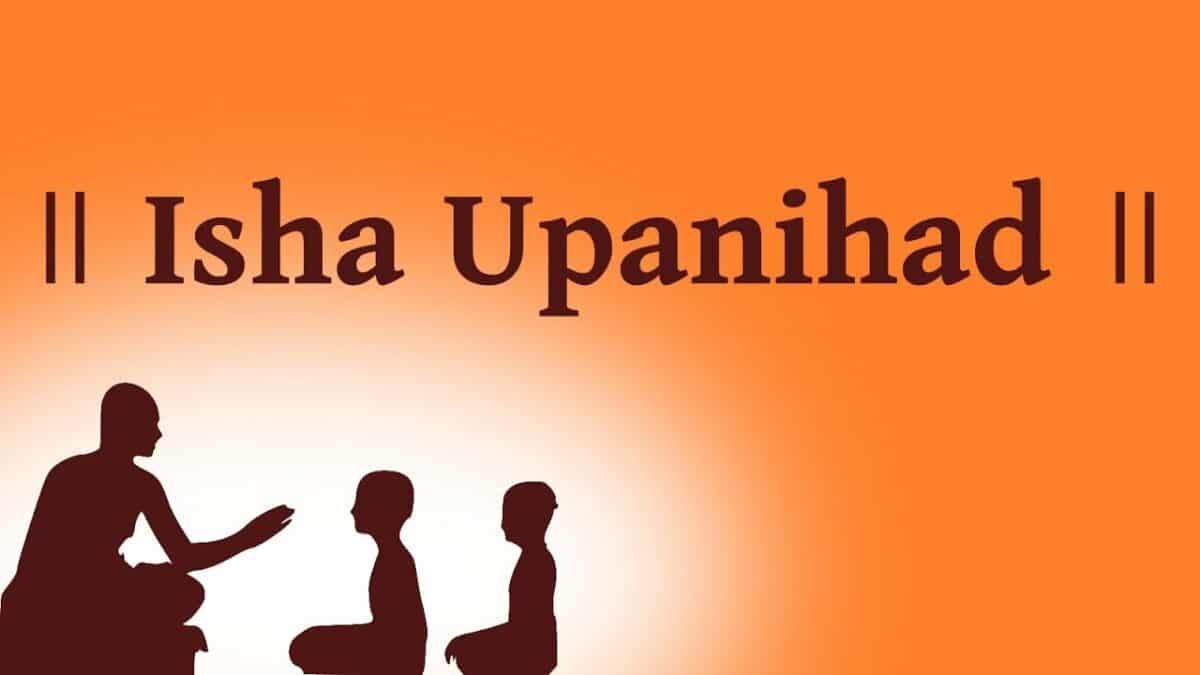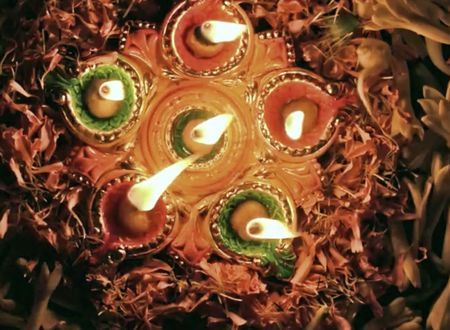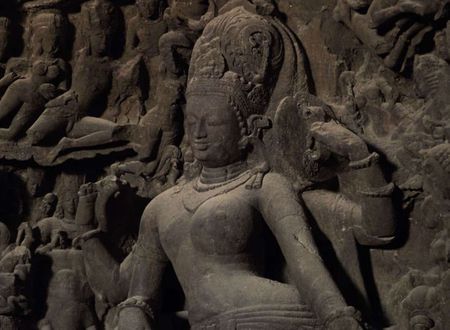My first and foremost salutations to our beloved master who is the Isha, the ruler of my universe, the one who governs my universe. My infinite obeisances to the Sri and Lord Narayana who reside in him within and without. If I have to pick one scripture from our entire wealth of scriptures, I would pick this one. My second favorite is Srimad Bhagavad Geeta. The beauty of the scriptures of Sanatana Dharma is that each scripture is complete in itself. Pick any scripture and live your life practicing the truth that has been indicated in the text and your life stands transformed.
However, Isha Upanishad has a special place in my heart for two reasons. The brevity of the scripture makes it possible for a dull-witted person like me to read it in its entirety in a quick short span. One may even recite it as a daily practice. The second reason that makes this text my absolute favorite is that it also serves as a practical guide for someone who has an earnest desire to be established in the Divine Truth.
The purpose of sharing this text here is twofold for me :
I wish to re-read this text in light of Swamiji’s teachings.
Vedanta talks about Reality from two aspects. One is the Absolute Reality(Paramarthika Satya) and the other is Relative Reality (Vyavaharika Satya). This is my humble attempt to understand the practical aspect (vyavaharika Satya) spoken in this sacred text.
Caveat :
Please do not consider this as a commentary on the text in any way. I would suggest you go through the commentary of Authentic Acharyas only if you wish to know the metaphysical aspect of the text. These posts can be named at best as ramblings of a seeker who wishes to be established in these verses of the text while living in the world carrying out his worldly duties.
Invocation Chant:
oṃ | pūrṇamadaḥ pūrṇamidaṃ pūrṇātpūrṇamudacyate |
pūrṇasya pūrṇamādāya pūrṇamevāvaśiṣyate ||
The purpose of invocation is two-fold in the Upanishadic teachings. The first and foremost purpose is to offer gratitude to the Divine within and without.
The second purpose is to fix a goal of the text. The entire text is like a commentary on the invocation chant. Once we fix a goal in the invocation chant, the text tells us how to achieve this goal.
Literal Meaning: That is Complete, This is Complete. From the Complete, the Complete has manifested. If we take out Complete from the Complete, What remains is also Complete.
My Personal Understanding :
Stage 1: That is Complete.
The spiritual journey begins when we look at the world and wonder about the magic of this entire universe. We further reflect on the world and start with a faith that this world is not random magic, there is a magician behind the wonders of the world. The Vedas name this reality behind the manifested world as ‘ Tat’. ‘Tat’ means ‘That’, we look at it outside and say it as ‘That’. ‘That’ also indicates the concept of far-ness, as well as separateness. The seeker at this point in time experiences a feeling of far-ness, separateness, something that is outside of him. He wonders about the reality but feels that this reality is something outside of ‘this’.
Stage 2: This is Complete.
‘This’ is what we consider our own identity. Whatever we experience as”I” is called ‘This’. ‘This’ also indicates ‘Nearness’ and ‘inclusivity’. The seeker feels closeness with ‘this’. ‘This’ should not be confused with our body-mind complex. The seeker is advanced enough to know this body and thoughts are separate from him. The point is when he sees the reality outside, a feeling of wondrous divinity arises. This is not a thought or an image, but an awareness of being complete, fullness. At that moment, the seeker does not desire anything else, all his desires are fulfilled that moment. He is not seeking anything, hence there are no thoughts. He is full of bliss and experiences completeness.
At this moment, a feeling arises that indicates to a seeker that the completeness he experiences is within him. The divinity, the completeness, although triggered by ‘That’ is experienced in ‘This’.
Stage 3: From the Complete, the Complete has manifested.
He experiences two realities, an object, and a subject. He contemplates the divinity, an object of adoration and as if drawing a spark of divinity within. The Complete, the fullness and divinity he experiences have manifested out of the Complete, the divinity he contemplates upon. He is dependent upon the object of adoration to invoke any divinity within.
Stage 4: If we take out Complete from the Complete, What remains is also Complete.
Until now, the seeker sees a reality outside and considers it as an object. Then, he brings the same object is his conscious mind. Contemplating upon this object invokes the completeness, fullness, and divinity within.
In Stage Four, he contemplates further that ‘this’ reality that is experiencing the ‘completeness’ is a transient reality, it comes and goes. What happens to the Completeness he experiences then. Does ‘that’ Completeness also disappear as ‘this’ disappears.
Here, the teacher gives out the secret: The world is upside down my dear. ‘This’ is not a subject but an object. ‘That’ is not an object but a subject. An individual being is a self-conscious object that can draw a spark of Divine from ‘That’. ‘That’ never disappears. ‘That’ remains as is. ‘That’ is independent of ‘This’.
‘This’ is a vessel to manifest ‘That’. Each and every object in the universe is a medium to manifest ‘That’. ‘That’ does not depend upon any object to exist.
The goal of human life is to become a perfect vessel to manifest the Divine so that at the end of life, knowing the vessel has served its purpose can discard ‘This’ gracefully and be established in’ That’.
To be Continued …
🌼🌼🌼All Glories to Swamiji alone🌼🌼🌼









Comments & Discussion
9 COMMENTS
Please login to read members' comments and participate in the discussion.